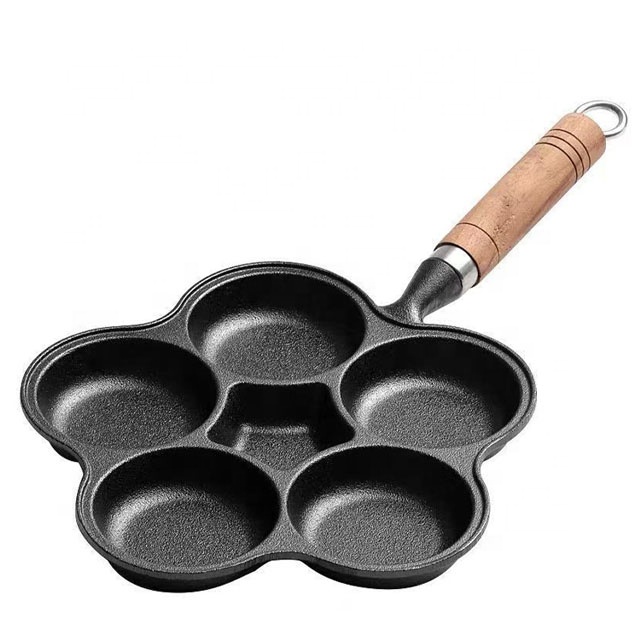
cleaning and reseasoning a cast iron skillet
Cleaning and Reseasoning a Cast Iron Skillet A Step-by-Step Guide
Cast iron skillets are a beloved kitchen staple, known for their durability, heat retention, and versatility. However, proper maintenance is crucial to keep them in prime condition. Cleaning and reseasoning your cast iron skillet not only ensures its longevity but also enhances its non-stick surface for better cooking. This guide will walk you through the process of cleaning and reseasoning your skillet.
Why Clean and Reseason?
Over time, cast iron skillets can accumulate food residue, grease, and rust if not cared for properly. Regular cleaning and reseasoning remove these impurities, restore the skillet's protective coating, and maintain its non-stick qualities. Reseasoning involves applying a layer of oil and heating it to create a polymerized surface that protects the iron from moisture and creates a natural, non-stick finish.
Cleaning Your Cast Iron Skillet
1. Immediate Cleaning After cooking, it's best to let the skillet cool slightly but not completely. Use a soft sponge or cloth to wipe away any food remnants while the surface is still warm. For tougher residues, a small amount of coarse salt can act as a scrubber, helping to dislodge stuck-on bits without scratching the seasoning.
2. Avoid Soap Generally, it is advisable to avoid soap when cleaning cast iron. Soap can strip the skillet of its seasoning. However, a drop of mild dish soap is acceptable if the skillet is particularly greasy, but it should be rinsed and dried thoroughly afterward.
3. Use Hot Water If necessary, rinse the skillet with hot water. Never soak it, as prolonged exposure to water can lead to rust.
4. Drying After rinsing, dry the skillet thoroughly with a clean cloth or paper towel. You can also place it on low heat on the stove for a few minutes to ensure all moisture evaporates.
Reseasoning Your Cast Iron Skillet
Once your skillet is clean and dry, it's time to reseason it
.cleaning and reseasoning a cast iron skillet

1. Gather Supplies You will need cooking oil with a high smoke point (such as flaxseed, canola, or vegetable oil), a paper towel, and aluminum foil.
2. Preheat Your Oven Preheat your oven to around 450°F (232°C). This high temperature will help polymerize the oil, creating a durable seasoning layer.
3. Apply Oil Pour a small amount of oil onto the skillet's surface. Using a paper towel, spread a thin, even layer over the entire skillet, including the bottom, sides, and handle. It's crucial that the layer of oil is thin; excess oil can lead to a sticky finish.
4. Prepare for Baking To catch any drips while the skillet is in the oven, place a sheet of aluminum foil on the rack below your skillet.
5. Bake Place the skillet upside down in the preheated oven. Bake it for about one hour. This process allows the oil to cure, forming a robust layer of seasoning.
6. Cool Down After an hour, turn off the oven and let the skillet cool inside. This gradual cooling process will help prevent cracking or warping.
Maintenance Tips
- Regular Use The more you cook with your cast iron skillet, the better seasoned it becomes. Foods high in fat, such as fried foods, can help build up the seasoning. - Avoid Cooking Acidic Foods While it's okay to occasionally cook acidic foods like tomatoes, frequent cooking of these dishes can wear down the seasoning.
- Store Properly Ensure your skillet is completely dry before storing it. You can place a paper towel inside to absorb any moisture, preventing rust.
Maintaining your cast iron skillet through regular cleaning and reseasoning is key to preserving its performance and appearance. With a bit of care, your skillet can last a lifetime, becoming a trusted companion in your culinary adventures. Happy cooking!
-
Black Cast Iron Pan- ZD Cookware|Non-Stick, Heat ResistantNewsAug.03,2025
-
Cast Iron Cookware Pancake Pan- ZD Cookware|Non-Stick, Even Heat, DurableNewsAug.02,2025
-
Cast Iron Cookware- Baixiang County Zhongda Machinery|Non-Stick, Heat RetentionNewsAug.02,2025
-
High Quality Kitchen Durable Black Round Cast Iron Cookware Pancake Crepe Pan With Wooden Handle|Non-Stick Surface&Heat RetentionNewsAug.02,2025
-
Authentic Traditional Chinese Wok for High-Performance CookingNewsAug.02,2025
-
Season Cast Iron Perfectly with GPT-4 Turbo TipsNewsAug.01,2025


